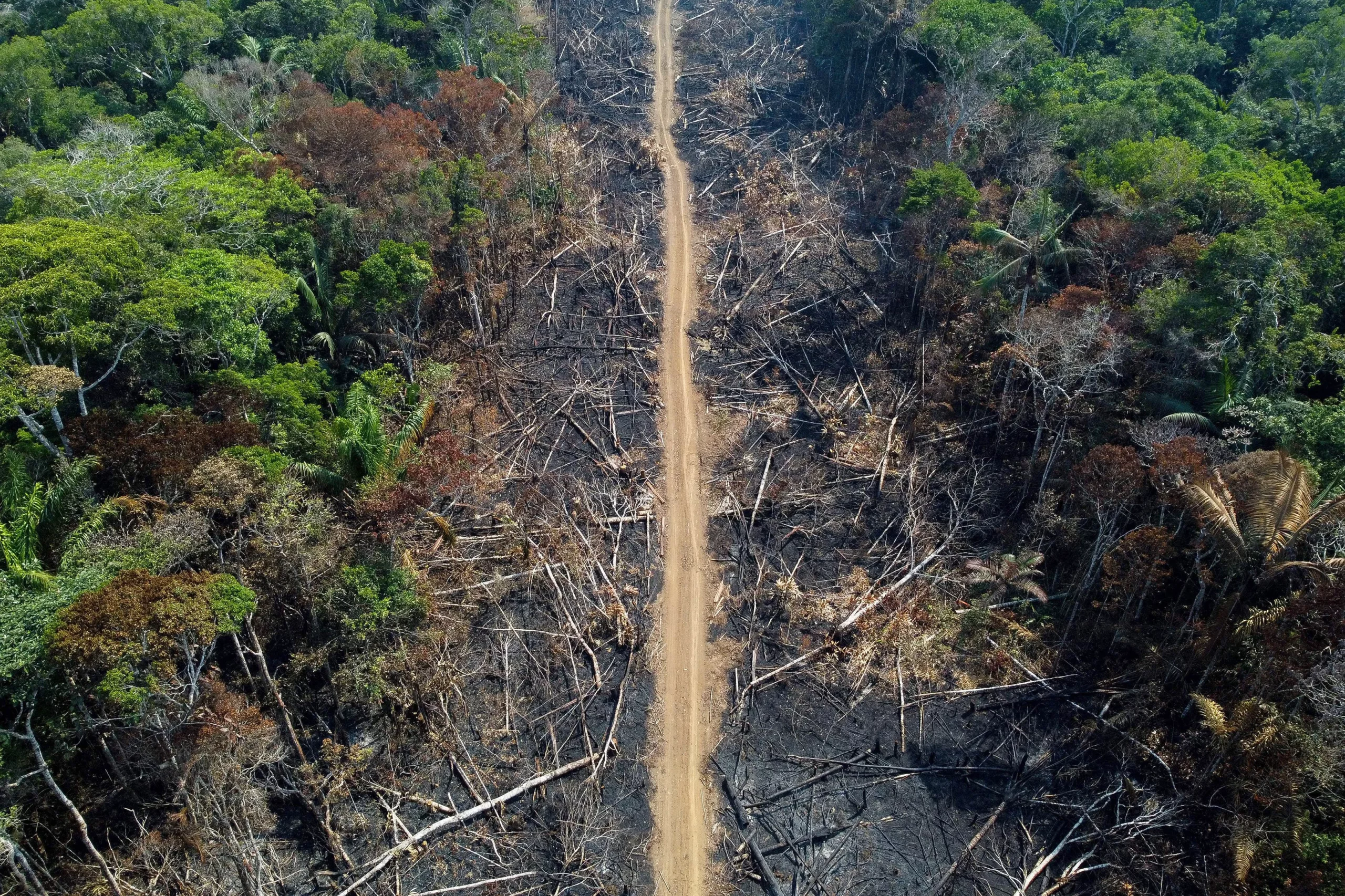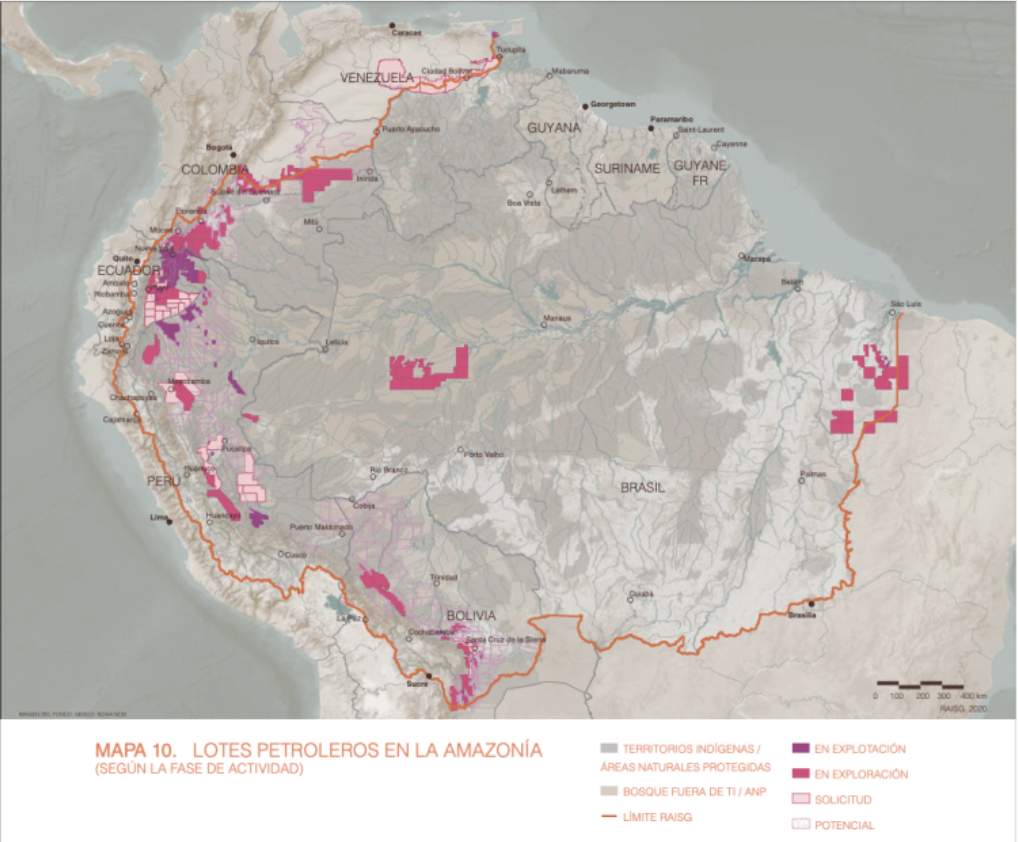Ending deforestation isn’t enough to save the Amazon Rainforest. We need to stop drilling for oil and gas. This is what the science demands.
What is the Amazon Summit
The Amazon Summit, which takes place on August 8th and 9th in Belém (PA), is a meeting with leaders of the countries party to the Amazon Cooperation Treaty Organization (ACTO). These are: Brazil, Bolivia, Colombia, Ecuador, Guyana, Peru, Suriname and Venezuela. The goal of the summit is to create a document, outlining a consensus on the future of the forest in order to prevent it from reaching its tipping point, where it would no longer be considered a rainforest at all. The document will be delivered by Brazilian authorities to the 193 Member States at the UN General Assembly in September 2023, and to world leaders at COP 28 in December 2023 – and if necessary, other international fora.
This is not all that will happen in Belém in early August. Movements, networks, collectives, activists, institutions and organizations of traditional communities from the Amazon region and all of South America, as well as artists, religious leaders, environmentalists, communicators, academics, women, those from Amazonian communities, and many more, will meet for the Assembly of the Peoples of the Earth for the Amazon. These people from diverse communities and backgrounds are coming together and mobilizing, with a clear message to the leaders of the ACTO: That they must save the Amazon from destructive human activity and from further climate change, that the systemic violations against the people of the forest need to stop, and that they must support these people with the right to live with dignity, and in harmony with nature.
The call made to those who will be in attendance is the result of several months of work between the Pan-Amazon Social Forum (FOSPA), the Pan-Amazon Ecclesial Network (REPAM), the World Assembly for the Amazon (AMA), various indigenous organizations in the Amazon basin as well as civil society institutions. Proposals by these groups have been delivered to the heads of state of the ACTO countries with suggestions on how to protect the Amazon from further destruction.
Included in these documents are strategies that involve protecting the Amazon from deforestation, which is unanimously agreed upon by all leaders in the region…
Zero Deforestation of the Amazon is essential, but not enough
Ending deforestation requires tackling the climate crisis, and for this, we must abandon the use of fossil fuels worldwide. This is because the main cause of the climate crisis is its dependence on fossil fuels, which are responsible for about 86% of greenhouse gas (GHG) emissions.
However, governments around the world plan to produce more than twice the amount of fossil fuels by 2030 compared to what is needed to avoid a temperature change of 1.5°C or 2°C, contradicting their commitments made in the Paris Agreement. These investments in fossil fuels, like oil and gas, also contradict the recommendations for reducing greenhouse gasses made by the Intergovernmental Panel on Climate Change (IPCC).
The extractive activities of the oil and gas industry also leads to very serious violations of human rights.This is especially significant in Latin America, where a history of accidents with devastating socio-environmental and human impacts have occurred. It is well documented that the Amazon has had many failed projects that promised to generate jobs, income and development, instead delivering economic gains to only the rich and environmental degradation to all.
The Amazon Rainforest is threatened by the interests of a handful of stakeholders
Between 2012 and 2020 alone, the Amazon region saw a 13% increase in the number of oil fields. In some cases, a large percentage of each country’s portion of the Amazon is covered by oil fields, with Ecuador having the largest overlapping Amazon area (51.5%), followed by Peru (30.9%), Bolivia (28.8%) , Colombia (27.3%), and Venezuela (2.7%) and Brazil (1.4%).
In Brazilian territory, the most recent project in favor of oil exploration in the Amazon involved a drilling request made by state-owned Petrobras, to dig a well in the maritime block FZA-M-59, at the mouth of the Amazon river on the coast of the state of Amapá. Licensing for this well was denied by the Brazilian environmental agency (IBAMA) for strictly technical reasons, but there has been intense political pressure on the agency to approve the activity.
Further inland, Amazon indigenous communities were not consulted in the licensing process for an Eneva gas production site. Brazil is a signatory to Convention 169 of the International Labor Organization (ILO), which guarantees the right of indigenous and tribal peoples to be consulted, in a free and informed manner, before decisions are taken that may affect their assets, rights, territories and lifestyle. Despite this, the license was granted by the Institute for Environmental Protection of Amazonas (IPAAM), an Amazonian environmental agency.
South Americans do not (and should not) have to continue the practices of the Global north
The Global South does not have to follow the inaction of countries that have caused the most pollution. Pan-Amazonian governments can lead in climate mitigation and adaptation measures to limit global warming to 1.5C, as per the Paris Agreement, be protagonists in the execution of a just energy transition in their countries, and become examples the rest of the world will want to follow.
The Amazon does not need oil and Gas
Ceasing to produce fossil fuels such as oil and gas in the Amazon will not put the lives of the populations of the countries in the region at risk, especially those in the local communities directly affected by the activities of these companies. The opposite will happen.
In May, the World Bank published a report on the development of the Brazilian Amazon, which shows that clearing the forest can cost the country at least US$317 billion.The value is seven times higher than profits from commodities taken from the rainforest – which, as already mentioned above, leave environmental destruction and widespread poverty as a result.
Another study, developed by WRI Brazil in partnership with 76 specialists from scientific institutions throughout Brazil, reinforces that maintaining the forest is an opportunity for qualified and inclusive growth for the Amazon region. The “New Economy of the Amazon,” based on practices of bioeconomy, would add US$40 billion per year to the GDP of the Amazon region, starting in 2050, creating more than 800,000 jobs in the bioeconomy sector, leading to zero deforestation and the restoration of 24 million hectares of forest. Not to mention, the forest would net 94% less emissions and retain 19% more carbon.
What is the ask?
Civil society institutions entities, social movements and traditional peoples, aligned with the science, are asking:
- That Pan-Amazonian governments no longer subsidize the production of fossil fuels like oil and gas, or offer new licenses for oil exploration in the region, redirecting subsidies to the promotion of the bioeconomy.
- The participation and decision-making of indigenous and other traditional peoples and local communities is guaranteed. These communities should be consulted and offered processes to give consent and participate in the decision-making alongside countries’ governments, for these and any other issues which can affect their territories.
- States initiate the transition to a new energy model, which at the same time protects the biodiversity of the Amazon, as part of the commitments of the Paris Agreement, considering the particularities of each region and avoiding new, negative territorial impacts.
- The Amazon be made into a non-proliferation zone for oil and gas exploration by not allowing the operation of any new exploration sites.






